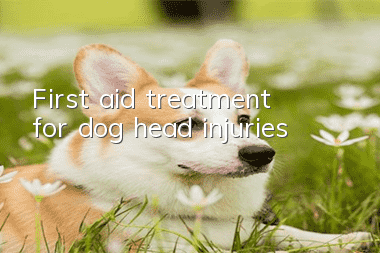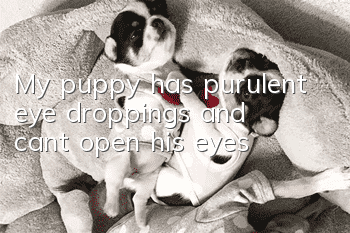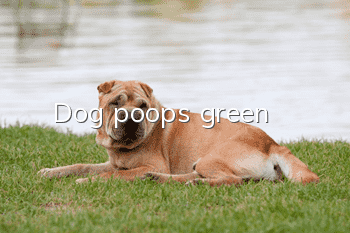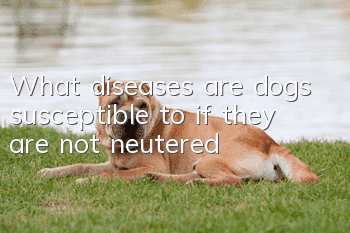First aid treatment for dog head injuries

Dogs are animals after all, so they are still wild. Sometimes they will fight if they see the same kind or natural enemies, or they will suffer trauma due to various accidents. If the dog has a head injury, how should we treat it? First aid treatment for head trauma in dogs?
Irish Wolfhound
1. Case introduction
Teddy dog, male, one year old, 5kg, body temperature 38.5℃. The day before the consultation, he bumped into a wall and was stabbed on the forehead by a foreign object. He fainted on the spot. However, his mental state was acceptable when he saw the consultation.
2. Diagnosis and treatment
When diagnosing, observe whether the dog's mental state and movement are normal, whether the wound is contaminated, whether there are foreign bodies in the wound, and take X-rays to observe whether there are foreign bodies in the skull. After examination, it was found that the dog was running normally, with an infected wound on the head and not much exudation (see Figure 2). The imaging examination found that the skull was intact and free of foreign matter (see Figure 3).
After the sick dog was given general anesthesia, the wound was shaved and disinfected with iodine tincture. Use hydrogen peroxide, 0.9% normal saline (250ml), ceftiofur (0.1g), and iodophor to rinse the wound site, and use ceftiofur (25mg) and dexamethasone (0.25ml) for continuous subcutaneous injection for seven days, and use A- Parker Anti-Inflammatory Cream for anti-inflammatory treatment. Then subcutaneously inject vitamin K (0.5ml) and ethylamine (1ml) for hemostasis. Finally, intravenously inject 5% glucose sodium chloride injection (250ml), 50% glucose injection (5ml), ATP (0.2ml), coenzyme A (50U unit), gentamicin (0.5ml), and correct water and electrolytes Dissonance.
For mild wound infection, after thorough debridement, trim the wound edges, perform sterile surgical suturing, apply ointment externally, and disinfect the wound every day and change dressings. The stitches will be removed in 7-10 days depending on the healing status.
3. Trauma treatment measures and principles
Trauma can be divided into fresh wounds and old wounds according to the time elapsed after the injury. Fresh wounds are those that have been injured for a short period of time, there is still blood flowing out or blood clots in the wound, and the contours of various tissues in the wound can still be identified. Although some are seriously infected, there are no symptoms of wound infection. Old wounds have been injured for a long time, and the outline of each tissue in the wound is difficult to identify. Obvious symptoms of wound infection appear, some discharge pus, and some appear granulation tissue. Wounds are divided into sterile wounds, contaminated wounds and infected wounds according to whether there is infection or not. Although the contaminated wound is contaminated by bacteria and foreign matter, it has not invaded the deep tissue and developed and reproduced. The infected wound is the development and reproduction of a large number of pathogenic bacteria in the wound, showing a pathogenic effect on the body.
Factors that affect wound healing include: wound infection; presence of foreign matter or necrotic tissue in the wound; poor blood circulation in the injured area; restlessness in the injured area; unreasonable treatment of the wound;Vitamin deficiency;
1. The general principles of trauma treatment are:
① Anti-shock: Anti-shock first, and then perform debridement after the shock improves. However, for major bleeding, chest wall penetrating wounds and intestinal prolapse, surgical treatment should be performed while actively anti-shock.
② Prevent and treat infection. Antibiotics should be started immediately after injury to prevent purulent infection, and at the same time, cooperate with local treatment.
③Correction of water and electrolyte imbalance
④Eliminate factors that affect wound healing
⑤ Strengthen feeding and management. Supplement adequate nutrition, improve resistance, and promote wound healing. For severe wounds, high protein and vitamin-rich feed should be given.
2. Basic methods of trauma treatment
①Wound cleaning: Cover the wound with sterile gauze, wash with hair-free soapy water around the wound, and disinfect with iodine tincture.
②Wound cleaning: Remove foreign matter, blood clots or pus scab from the wound surface, and repeatedly clean the wound with physiological saline or antiseptic solution until it is clean.
③Debridement surgery: remove all inactive tissues in the wound, remove visible foreign matter, eliminate the wound sac and concave wall, expand the wound, and ensure smooth drainage.
④ Wound medication can prevent wound infection, accelerate inflammation and purification, and promote the regeneration of granulation tissue nuclear epithelium.
⑤Trauma suturing
⑥ Trauma drainage: When the wound cavity is deep, the wound tract is long, there is necrotic tissue in the wound, or the wound retains exudate, etc., a drainage strip can be used to promote drainage.
⑦ Wound dressing to keep the wound quiet.
⑧Systemic treatment: Use antibiotics to control inflammation and prevent secondary infection.
- Dog bleeding from one side of nose
- What are the symptoms of dogs getting angry?
- What’s wrong with a dog’s red eyes?
- How to train a golden retriever to search and rescue? Methods and techniques for training golden retrievers!
- How to treat Yorkie skin disease?
- Five things to note when raising a dog in summer
- What are the key points of raising Doberman Pinscher?
- How to prevent parasites in dogs
- The most powerful basic knowledge of raising a dog, essential information for raising a dog
- Can Teddy dogs eat cooked chestnuts?



